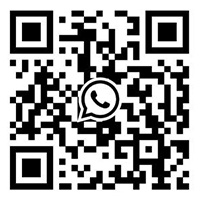
Understanding Digital Abbe Refractometers: Precision Instruments in Optical Measurement
Release time:
2025-06-12
The digital Abbe refractometer is an advanced optical device designed to measure the refractive index of liquids and solids with high precision. This instrument operates on the principle of light refraction, which is the bending of light rays as they pass through different media. By analyzing the angle at which light is refracted, the digital Abbe refractometer can provide accurate readings of the
One of the key advantages of digital Abbe refractometers is their ability to deliver quick and highly accurate measurements. Traditional refractometers often require manual readings and calculations, which can introduce human error. In contrast, the digital variants automate these processes, providing instant readings on a digital display. This not only enhances accuracy but also increases efficiency, making it ideal for laboratories and production lines that require rapid testing.
These refractometers are widely used across various fields, including chemistry, food and beverage, pharmaceuticals, and material science. For instance, in the food industry, a digital Abbe refractometer can help determine sugar concentration in liquids, which is crucial for maintaining product quality. Similarly, in the pharmaceutical industry, the refractive index can aid in characterizing substances, ensuring consistency and efficacy of the products.
Another significant feature of digital Abbe refractometers is their adaptability to different sample types. Many models come equipped with interchangeable prisms and temperature control systems, allowing for precise measurements of a wide range of substances, including oils, syrups, and even solid materials. This versatility makes them an essential tool in both research and quality control settings.
Digital Abbe refractometers also often include advanced features such as temperature compensation, which accounts for variations in environmental conditions that may affect measurements. Some models provide connectivity options, enabling data transfer to computers or laboratory information management systems (LIMS) for further analysis or record-keeping. This integration supports seamless workflow and data management in modern laboratories.
Moreover, the ease of use associated with digital Abbe refractometers makes them accessible to a wide range of users, from seasoned scientists to those new to analytical techniques. With user-friendly interfaces and comprehensive manuals, operators can quickly learn to use the instrument effectively, making it a valuable addition to any analytical laboratory.
In conclusion, the digital Abbe refractometer represents a significant advancement in optical measurement technology, providing fast, accurate, and versatile solutions for refractive index measurement. Its applications across diverse industries underline its importance in quality control and research, making it an indispensable tool for professionals in the field. Understanding its functionality and features can help users make informed decisions when selecting the right refractometer for their specific needs.
Latest News
The Essential Guide to Handheld Brix Refractometers: Enhancing Precision in Measurements
Handheld Brix refractometers are sophisticated instruments widely used to measure the sugar concentration in solutions and mixtures, primarily in the food and beverage industry. But their utility doesn't stop there; they also find applications in agriculture, pharmaceuticals, and even in environmental science. Understanding how these devices operate can significantly enhance precision in measureme
2025-07-18
Unlocking the Secrets of Sugar Content with a Handheld Brix Refractometer
Unlocking the Secrets of Sugar Content with a Handheld Brix Refractometer Understanding sugar content in liquids is crucial for various industries, including food production, agriculture, and beverage manufacturing. The handheld Brix refractometer stands out as an essential instrument for accurately measuring sugar concentrations. This article explores the mechanics, applications, and practical ti
2025-07-12
Understanding Gem Refractometers: Essential Tools for Gemology
Gem refractometers are specialized optical instruments used primarily in the field of gemology to measure the refractive index of various gemstones. This measurement is a critical factor in identifying and classifying gemstones, as different minerals and stones exhibit unique refractive indices. The ability to accurately determine these indices allows gemologists to distinguish between genuine sto
2025-07-06
Understanding Gem Refractometers: A Beginner's Guide
Understanding Gem Refractometers: A Beginner's Guide Table of Contents What is a Gem Refractometer? Importance of Refractometry in Gemology How Gem Refractometers Work Types of Gem Refractometers Using a Gem Refractometer: A Step-by-Step Guide Common Mistakes in Refractometry and How to Avoid Them Maintaining Your Gem Refractometer Conclusion FAQs about Gem Refractometers What
2025-06-30
The Essential Guide to Understanding Hand Held Salinity Refractometers
A hand held salinity refractometer is a specialized optical instrument designed to measure the concentration of salt in aqueous solutions. It operates on the principle of refraction, which is the bending of light as it passes through different media. By determining the refractive index of a solution, a hand held salinity refractometer can provide precise readings of salinity levels, making it an i
2025-06-24
The Science Behind Hand Held Salinity Refractometers: Understanding Refraction
The Science Behind Hand Held Salinity Refractometers: Understanding Refraction Table of Contents 1. Introduction to Salinity Refractometers 2. Understanding Refraction 2.1 The Basics of Light Refraction 2.2 Snell's Law and Its Importance 3. Components of Hand Held Salinity Refractometers 3.1 Optical Elements 3.2 Calibration Mechanisms 4. How Hand Held Salinity Refractometers Work 4.1 The Measureme
2025-06-18


